Acoustic Guitar Lessons: Blues turnaround
Breathe new life into your playing
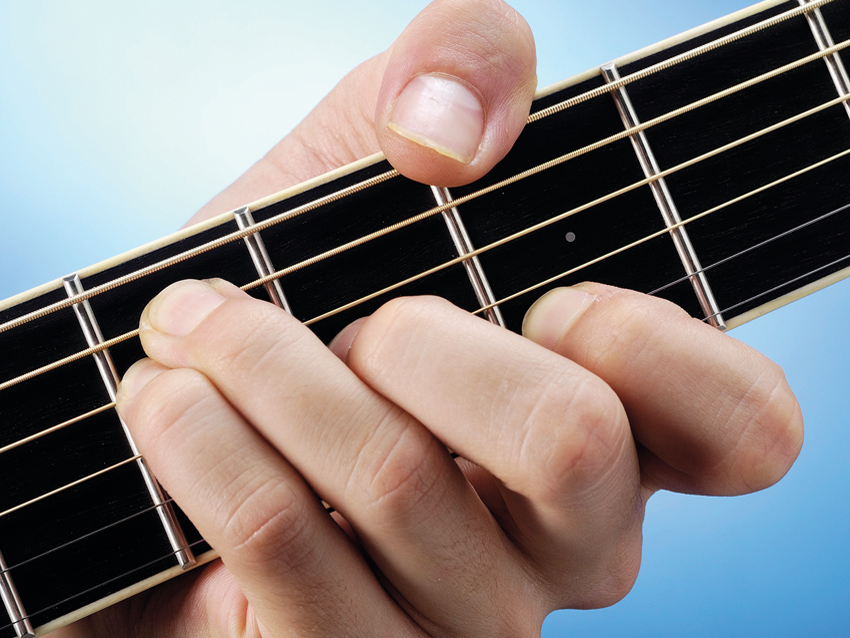
Learn to play acoustic blues turnarounds
The 12-bar blues is without doubt the single most jammed chord progression in the history of contemporary guitar. And with good reason: it’s catchy, easy to learn and affords huge improvisational potential to players of all abilities.
The trouble is that the seas of improvisation are infested with clichés; in particular, the last four turnaround bars that herald the return to the top of the form.
So here we’re looking at four different turnarounds in a variety of acoustic guitar styles to help you navigate those treacherous waters.
Passing notes
Tell me more about this turnaround. What does it contain?
Usually, the last four bars of a 12-bar use the chords V-IV-I-V, so for example, in the key of A that would be E-D-A-E. The roman numerals simply denote how far along the scale of A the chords’ root notes are found.
Some of the chords in the examples look a bit more elaborate, though.
True, but the implied harmony is largely the same. A7 is common in Delta blues while A9 may be preferred to plain old A in a more jazzy progression, for instance.
Hmm. That last example isn’t exactly blues, though, is it?
No, but then neither is Queen’s I Want To Break Free, but the chords are more or less the same!
Fair point. So where can I use this stuff?
These excerpts work very nicely in solo acoustic blues improvisation, or you could sneak them into a blues you may already play, such as Walkin’ Blues, Sweet Home Chicago, or Hey Hey!
The more licks you know, the freer you are to express yourself…
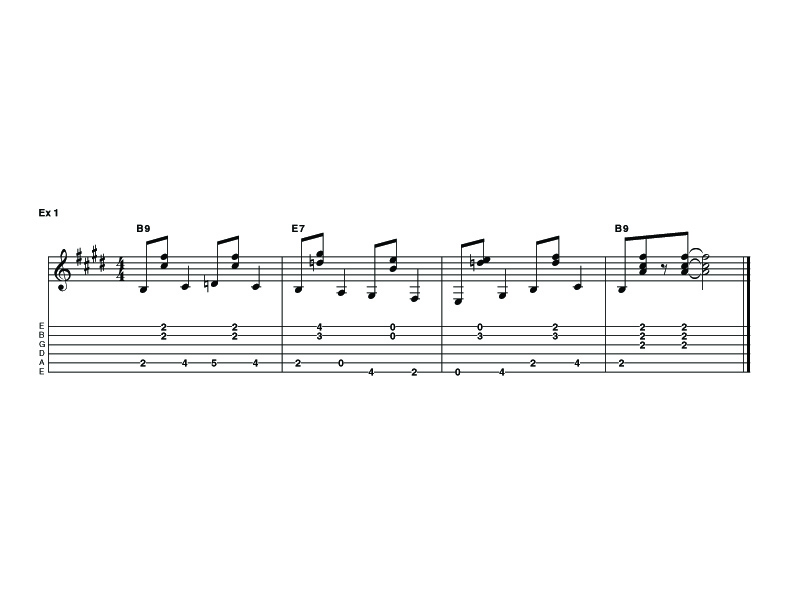
Example 1
Texan influence with off-beat chord stabs in E.
Listen:
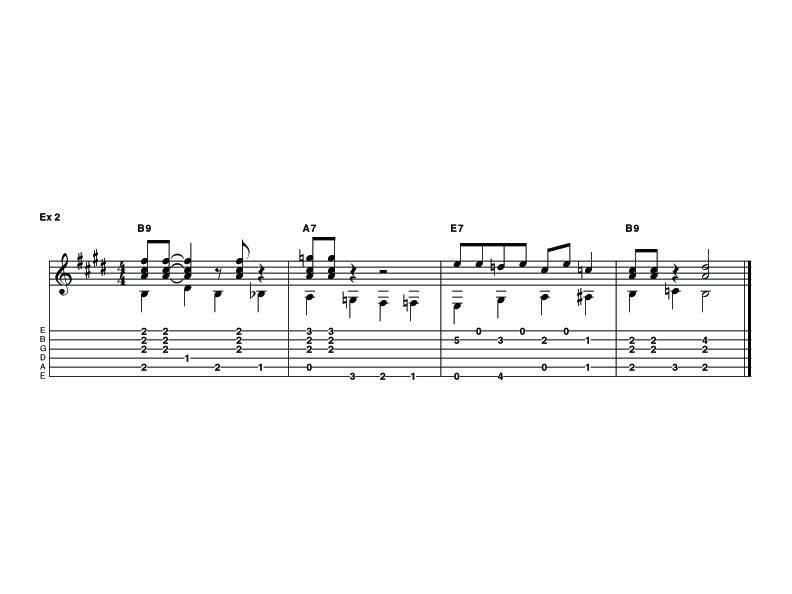
Example 2
Bassline with chromaticism in E.
Listen:
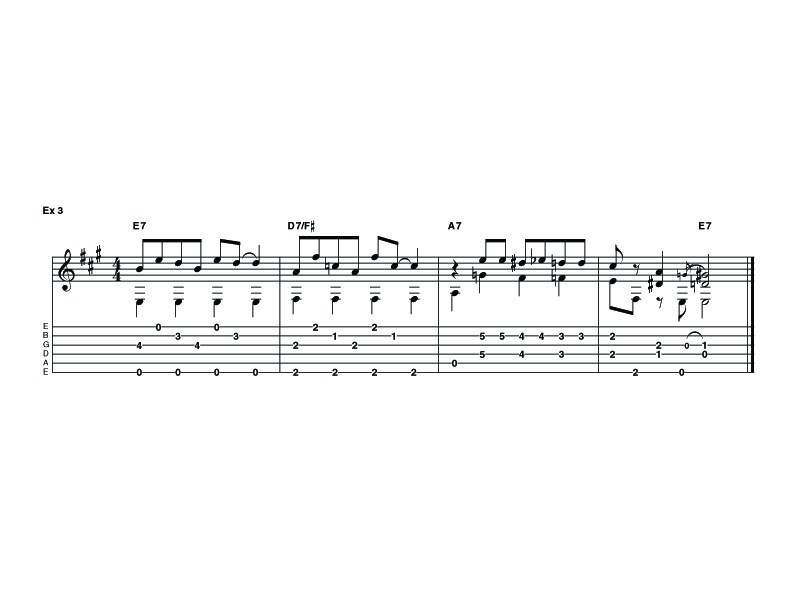
Example 3
Delta blues turnaround in A.
Listen:
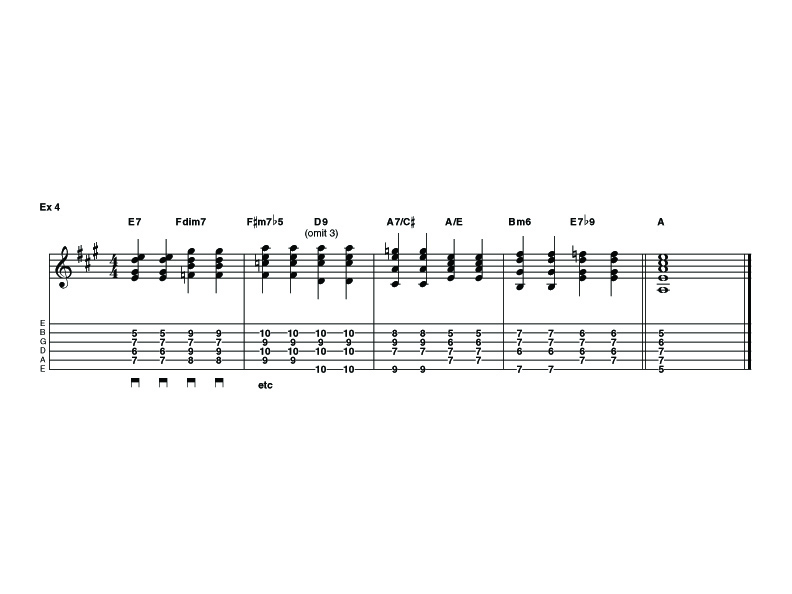
Example 4
Swing blues turnaround using downstrokes.









